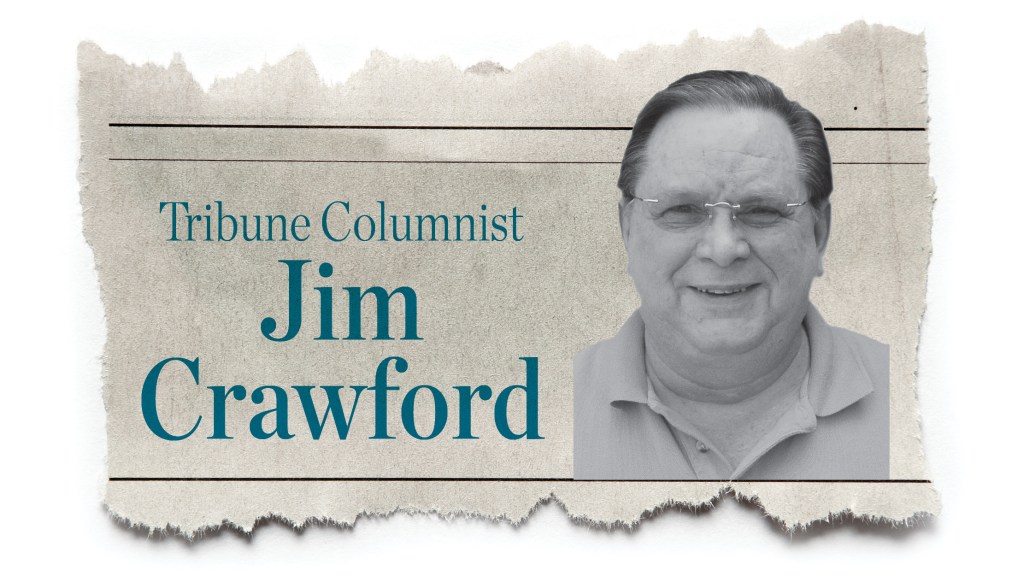Jim Crawford: Fain winning battles for working class
Published 12:00 am Monday, March 11, 2024
While not honored as Time Magazine’s Person of the Year, Shawn Fain might well be the single most important agent of middle-class values in 2023 other than Joe Biden.
Fain, a man of modest working-class background and a leader who appeared on the national scene pretty much without a resume, accomplished more in the 2023 UAW contract with the Big Three automakers than any union individual since the 1960s. His success will translate to many other segments of the middle class, raising wages and benefits attained by his union.
Fain, born in 1968 in Kokomo, Indiana, was destined to join the auto industry in a small town where pretty much everyone went to work in the auto plants and for the auto suppliers. Fain became an electrician at the then-Chrysler plant in Kokomo and moved up in the union ranks to become a local plant union chairperson.
As a union activist, he first became noticed for his objection to the tiered wage proposals the automakers imposed upon the union during the Great Recession of 2008.
Fain later moved to the UAW staff in Detroit and, after a 2017 financial mismanagement scandal at the UAW, ran for president of the UAW in the first-ever popular vote election. He won the election by a slim margin of 50.2 percent in March of 2023. Most immediately, Fain changed methods and expectations of the UAW demanding what was perceived as outrageous demands from the Big Three automakers.
He never backed down. Among his most innovative strategies were directly revealing company offers to the public, the “Stand Up” concept of workers walking off the job and into strike mode without announcement, and, perhaps most importantly, disclosing the facts about the companies’ profit gains at the expense of their workers.
According to Google AI, “The Big Three automakers, Ford, General Motors and Stellantis, have seen profits increase by 92 percent from 2013 to 2022, totaling $250 billion,” while worker wages fell 19 percent from comparable wages before the 2008 pay cuts. In early 2023, Ford argued it could not afford the UAW wage demands only days before awarding stockholders a $600 dividend. Fain then promptly characterized the fight as a battle between the billionaire owners and shareholders against the American middle class.
In 2008, auto workers accepted deep income cuts to save their industry, surrendered pension plans and made concessions as necessary to allow their employers to survive. Only to later be ignored when profits returned and increased. Fain became the right leader at the right moment, gaining meaningful wages and benefit concessions from the Big Three in the last October contract. After a 46-day strike, the UAW won a 25 percent pay increase over five years. It ended tiered pay, gained a four-day work week, the right to organize new battery plants, restoration of COLA for all, expanse of existing plants, the re-opening of a closed plant in Detroit and a voice in company directions going forward.
Fain and the UAW were not the only victors in 2023 for unions, but their accomplishments will benefit the entire middle class.
It is important to note, as the 2024 elections come closer, that the opponents of the UAW were folks who often want to claim they are populists, folks like Donald Trump and most elected Republicans. Trump has promised in 2017 to rejuvenate the auto industry. Instead, he watched it shrink.
In 2016, Obama’s last year in office, American automakers assembled 6.3M cars. In 2019, under Trump, that number fell to 4.5 million. Since Biden’s election, auto industry jobs have increased by 127,000 as of 2023, according to Politifact.
As for Republicans, since Reagan, they have fought against unions overall and against the middle class.
Jim Crawford is a retired educator and political enthusiast living here in the Tri-State.






